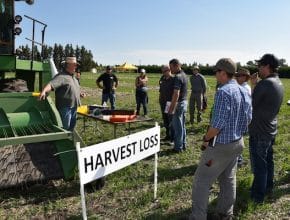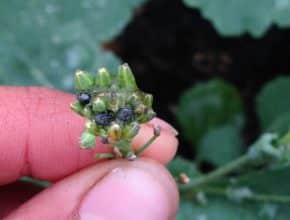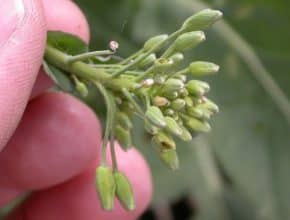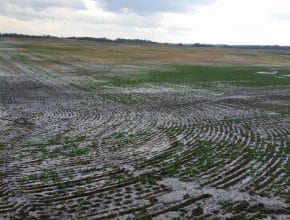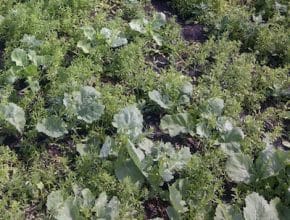How many bertha armyworm adults are in this jar? Take the quiz to find out…
June 26, 2015 - Issue 15
-
-
The Canola Council of Canada, Alberta Canola Producers Commission and Agriculture and Agri-Food Canada (AAFC) presented the first ever canolaPALOOZA at AAFC Lacombe and AAFC Beaverlodge this week. The event featured lots of hands on agronomy, leading experts and fun — including a dunk tank, slap shot contest, and food trucks. Our top 10 list includes just a sample of…
-
Patchy emergence due to a few weeks of dry and then a rain, or due to reseeded crop emerging among the few original plants, has created a wide range of stages in some crops. Make herbicide timing decisions based on the stage that represents the highest proportion of plants. And rather than planning on two applications, growers may be better…
-
Cabbage seedpod weevils are one example of an insect where crop stage is a factor in the management decision. Weevils lay their eggs in developing pods, and these larvae feed on canola seeds inside the pods. The rule of thumb is pods less than 3/4” are too small for egg laying. If some plants are forming pods and the rest…
-
-
The later hail occurs, the higher the chance of yield loss, given that the plants have less time to recover. Plants with a broken main stem will likely die. Plants at the 6-leaf stage that lose most of the leaf area on the main stem can still live, but these leaves will not regrow. The plant will be delayed, and…
-
Here are best management practices to be friendly with bees and beekeepers…
-
Late weed control significantly increases the yield loss from weed competition, and it can also damage canola plants. However, the yield and economic risks from a later in-crop spray could make sense... —If growers use canola as a clean up crop for Group-1 resistant wild oats, narrow-leaved hawk’s beard, round-leaved mallow and other tough weeds, a second herbicide application may…

